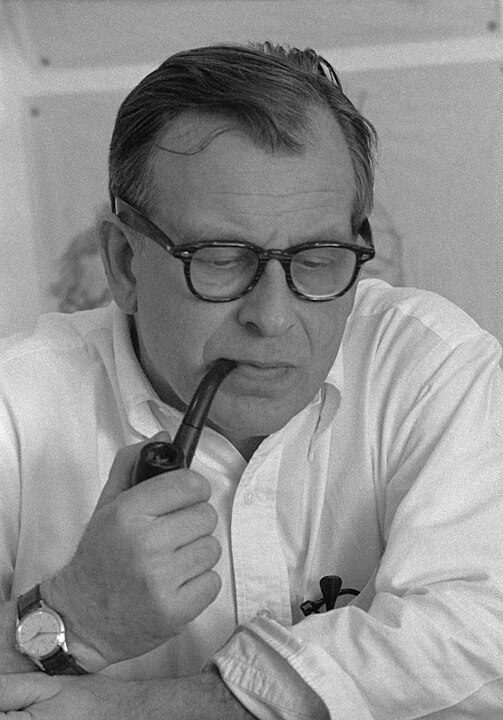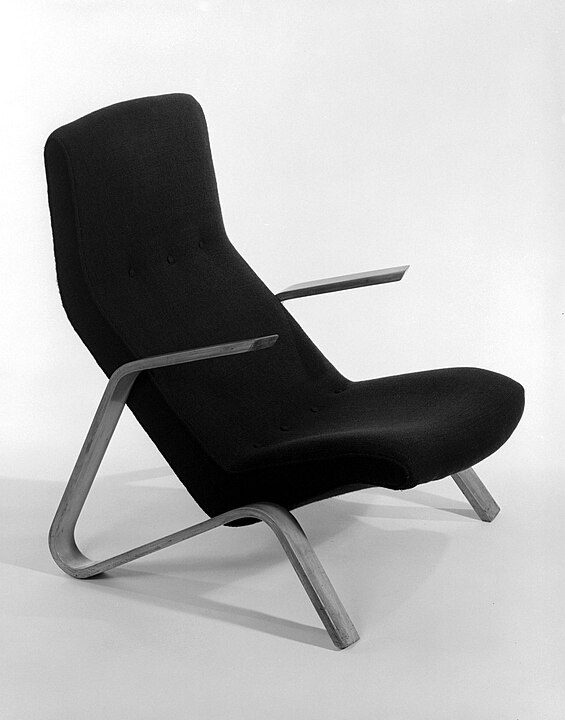
Eero Saarinen (1910-1961) was a Finnish-American architect and industrial designer noted for his neo-futuristic style, which infused modernism with sweeping, sculptural forms. Born on August 20, 1910, in Kirkkonummi, Finland, Saarinen was the son of the celebrated architect Eliel Saarinen and textile artist Loja Saarinen. His early life was steeped in design and architecture, moving to the United States in 1923 when his father took up a position at the Cranbrook Academy of Art in Bloomfield Hills, Michigan, which would later play a crucial role in Eero’s education and early career.
Eero Saarinen studied sculpture at the Académie de la Grande Chaumière in Paris in 1929-30 and then architecture at Yale University, graduating in 1934. After brief travels in Europe, he returned to the United States to work in his father’s architectural practice, becoming a key collaborator. This partnership laid the groundwork for his future success, allowing him to explore the integration of art and architecture, themes that would define his career.

In 1940, Saarinen won the first prize in the “Organic Design in Home Furnishings” competition organized by the Museum of Modern Art in New York, along with Charles Eames, a collaboration that yielded groundbreaking furniture designs. This victory marked Saarinen’s foray into industrial design and his commitment to marrying form and function, evident in iconic pieces like the Womb Chair and the Tulip Chair.
Career Breakthrough
Saarinen’s architectural breakthrough came with his design for the General Motors Technical Center in Warren, Michigan (1948-1956), showcasing his ability to blend the latest engineering techniques with cutting-edge aesthetics. This project established him as a leading figure in post-war American architecture, leading to a series of landmark commissions.

Perhaps Saarinen’s most famous works are the TWA Flight Center at John F. Kennedy International Airport (1962) and the Gateway Arch in St. Louis, Missouri (1965). Both structures exemplify his innovative approach to form, with the TWA Terminal celebrated for its dramatic, bird-like structure and the Gateway Arch for its elegant simplicity and monumental scale. These projects, though completed posthumously, cemented Saarinen’s legacy as a pioneer of modern architecture.
Variety of Work
Saarinen’s work extended beyond transportation and memorial structures; he also made significant contributions to educational architecture. Notable projects include the Ingalls Rink for Yale University (1958), a revolutionary design known as “The Whale” for its unique, undulating roof, and the campus of the Massachusetts Institute of Technology, where he designed several buildings, including the iconic Kresge Auditorium (1955) and the MIT Chapel (1955).
Throughout his career, Saarinen was recognized for his ability to integrate his buildings with their surroundings and for his use of new materials and techniques. His designs often featured organic shapes and were driven by his belief that each project required a unique solution, reflecting his deep commitment to both functionality and beauty.

Eero Saarinen died on September 1, 1961, at the age of 51. Despite his relatively short career, he left an indelible mark on the world of architecture and design. His work continues to be celebrated for its visionary qualities and its influence on the development of modernist architecture in the mid-20th century. Saarinen’s legacy is not only preserved in his iconic structures but also in his contribution to the broader discourse of design, where he advocated for a holistic approach, seamlessly blending form, function, and environment.




